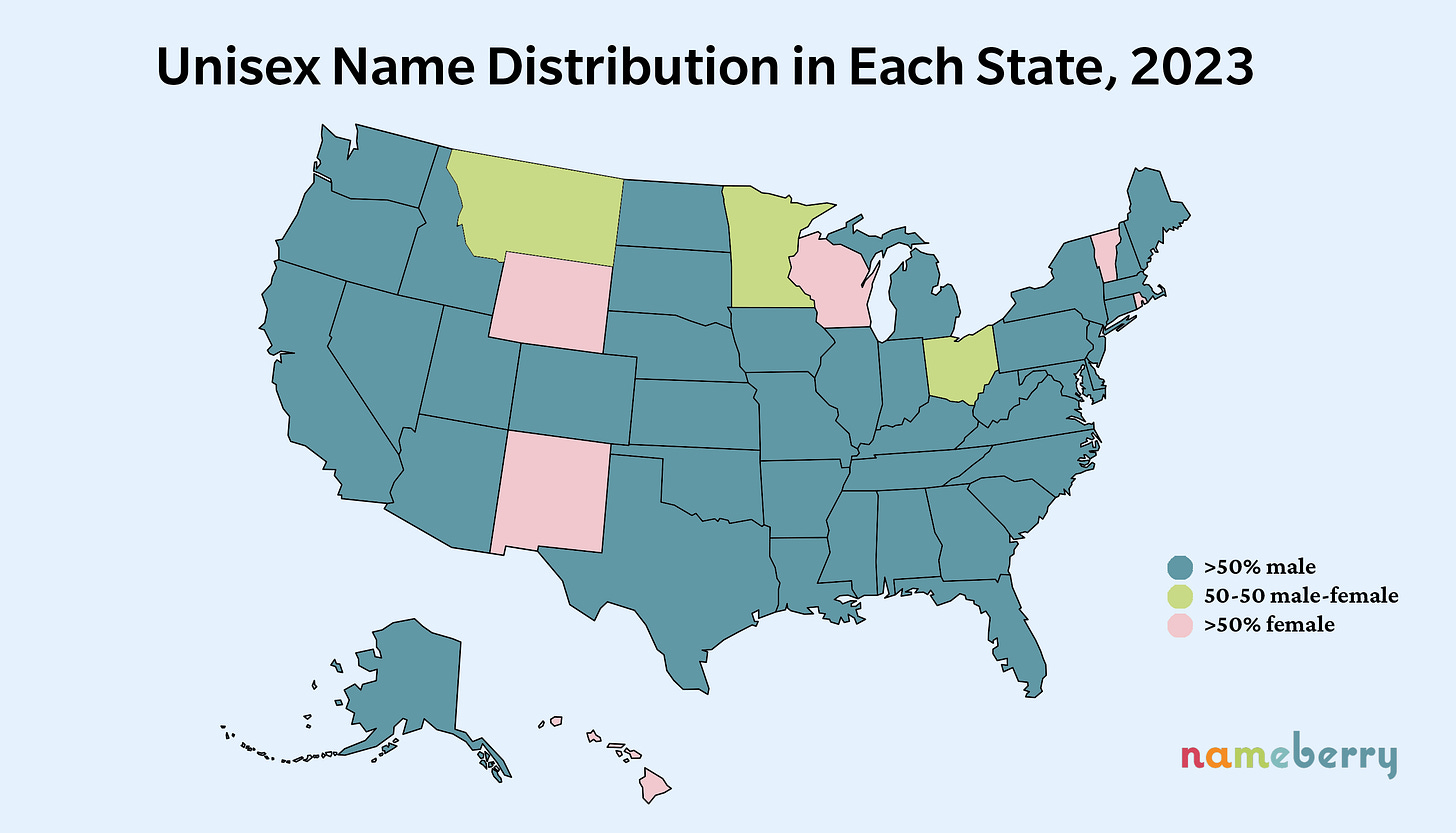Last week on Nameberry, we looked at the top unisex names in every US state. They’re a varied patchwork that includes popular Logan and Avery, as well as outliers like Oakley in Utah, and Jordan in New Mexico.
Now, just for our newsletter readers, here’s another way to look at unisex names in the States, through the lens of gender distribution:
Are parents using unisex names more for boys or for girls?
Sure, by definition these names can be used for either sex. (We count unisex names as those given to at least 10% of the less popular gender.)
But in practice, most lean towards one or other gender. Cameron is more male nationally (89% of Camerons born in 2023 were boys), while Quinn is more female (81% were girls).
And overall, for all unisex names? Nationally, it’s actually pretty balanced. In 2023, 328,000 children were given a unisex name in the US, of which 52% were boys and 48% were girls.
State-by-state, there’s a little more variation. In 41 states, unisex names are given to more boys than girls — though not by a huge majority. The most male-leaning states are Connecticut and North Dakota, where 59% of babies with unisex names were boys. Here, names like Cameron, Dylan, Ryan and even Noah were used for just enough girls to count as unisex, but still have a strong male majority.
In six states, more girls than boys got unisex names: Hawaii, New Mexico, Rhode Island, Vermont, Wisconsin, and Wyoming, plus DC. Here, enough boys have names like Noa, Nova and Eden to make them unisex. But these states lean female by the smallest of majorities: in most, between 51-53% of children with unisex names were girls.
And in three states, there was a 50-50 gender split of children with unisex names. In Minnesota, Montana, and Ohio, individual names have their own gender leanings as usual, but overall they balance each other out.
Balance is the big takeaway here. Unisex names are given to slightly more boys nationwide, but in most states it’s within a few percentage points of a 50-50 gender split.
It’s often said — and we often feel — that names are becoming more gender-neutral, so it’s interesting to see more data that could support this. Unisex names aren’t a style mostly for one gender; rather, for every unisex name that tips more male, there’s another that’s more female, and many that sit in between.
More Fun Things This Week
Stunning boy names straight from the woods🌳
It’s boy twins for MAFS contestants Jamie Otis and Doug Hehner, and they’ve nailed alliterative-but-not-too-matchy👶👶
Another case of the British passport office being over-cautious about character names. (I’d totally consider this middle if I had a child born on May 4!)🌠
Unisex sightings in the wild⤵️





